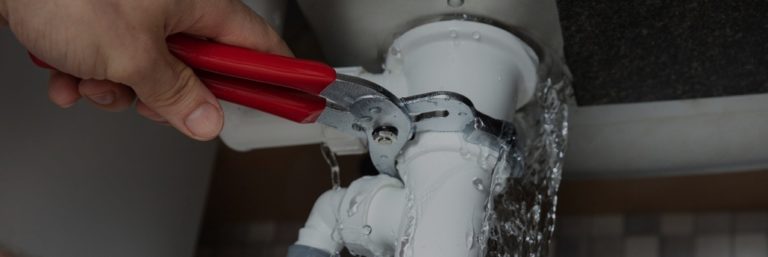How to Examine If Your House Has a Concealed Leak
How to Examine If Your House Has a Concealed Leak
Blog Article
This post following next on the subject of Detecting hidden plumbing leaks is relatively intriguing. Read it yourself and see what you think about it.

Early discovery of dripping water lines can alleviate a prospective disaster. Aside from saving you money, it will lessen the worry and aggravation. The moment you find a leak, calling your plumber for repairs is the best solution. However, some tiny water leaks may not show up. If you can not identify it with your nude eyes, below are some hacks that assist.
1. Check Out the Water Meter
Inspecting it is a guaranteed way that aids you find leakages. If it moves, that shows a fast-moving leakage. This indicates you may have a slow leak that might even be below ground.
2. Inspect Water Usage
If you detect sudden changes, despite your usage being the exact same, it indicates that you have leakages in your plumbing system. An unexpected spike in your expense shows a fast-moving leak.
A steady rise every month, even with the same practices, shows you have a sluggish leakage that's also slowly rising. Call a plumber to thoroughly inspect your home, specifically if you really feel a warm location on your flooring with piping underneath.
3. Do a Food Coloring Examination
When it comes to water consumption, 30% comes from bathrooms. If the color in some way infiltrates your dish during that time without flushing, there's a leak between the tank as well as bowl.
4. Asses Outside Lines
Don't fail to remember to inspect your exterior water lines as well. Test spigots by connecting a garden tube. Should water permeate out of the connection, you have a loosened rubber gasket. Replace this and also make certain all links are tight. If you've obtained a sprinkler system, it will help get it skillfully checked out as well as maintained every year. One little leak can throw away tons of water as well as surge your water bill.
5. Examine and Examine the Situation
Homeowners must make it a habit to inspect under the sink counters and also also inside cabinets for any type of bad odor or mold and mildew development. These two red flags suggest a leak so timely focus is called for. Doing routine examinations, also bi-annually, can save you from a major issue.
If you know your residence is currently old, maintain a watchful eye on your heating units, pipes, pipelines and so on. Look for discolorations and also deteriorating as the majority of pipelines and also home appliances have a life expectancy. They will additionally normally weaken as a result of tear and also wear. If you presume dripping water lines in your plumbing system, don't wait on it to escalate. Call a specialist plumber right now so you don't wind up with a terrible mess in your house.
Early detection of dripping water lines can reduce a prospective catastrophe. Some little water leaks may not be visible. Checking it is a proven means that aids you discover leakages. One little leak can throw away bunches of water and also surge your water bill.
If you suspect dripping water lines in your plumbing system, do not wait for it to rise.
How to Know If Your Home Has a Hidden Leak
Water Meter Reveals Inexplicable Water Usage
If you’d like to test whether or not there’s a leak somewhere in your home, you can do this using your water meter. Here is how to conduct the test:
Don’t use any water in your home for at least 30 minutes; this also means not turning on faucets or water-using appliances.
Go outside, and check your water meter for activity.
If your water meter shows that there was activity, even though no one was using any water, this proves that there is a leak in your home.Visible Mold or Mildew Growth
Leaks behind walls create moist, dark environments that allow mold and mildew to grow and thrive. Eventually, you might see mold growth forming on the wall closest to a hidden leak.
If mold is growing in an area that receives a high amount of moisture, such as a bathroom, it may simply be an indication that better ventilation is needed. However, if you see mold growth on a wall or the ceiling in an area where you would not expect, you probably have a hidden leak.
Musty, Mildew Odor
Sometimes you might not be able to see the mold or mildew that is growing as a result of a leak. However, the smell can give the problem away just as easily. If you catch a whiff of something musty, there’s a good chance that old water is collecting somewhere in your home that you can’t see.
Stained/Warped Walls, Ceilings, or Floors
When your home soaks up water, a variety of red flags can become visible, including ceiling stains, bubbling drywall, warped walls, and sagging floors. While these issues can be caused by excess humidity, they can also be signs that a pipe or plumbing connection has started leaking behind your walls.
Inexplicably High Water Bill
After a while, you get a general sense for what your water bill should be. If you own a pool or sprinkler system, your bill will tend to be higher during summer. However, if you receive a water bill that seems especially high, and you can’t figure out what caused it, then you may have a hidden leak somewhere that’s increasing your bill.
https://www.plumbingjoint.com/blog/2019/july/how-to-know-if-your-home-has-a-hidden-leak/

I have been very interested in Detecting hidden plumbing leaks and I am assuming you liked the entire blog entry. Are you aware of somebody who is sincerely interested in the niche? Feel free to share it. We treasure reading our article about Locating water leaks.
Report this page